World War One Planes Drawings
E'er since men first went to war in airplanes, they have felt the need to decorate their machines with unofficial, frequently banned and personal markings. So-chosen Olfactory organ Art created a powerful bail between homo and machine. Pilots wanted to come across their airplanes as nearly man entities with which they could identify. Especially when they faced danger, they fifty-fifty wanted to endow their war-birds with superhuman qualities to protect them and bring them safely back.
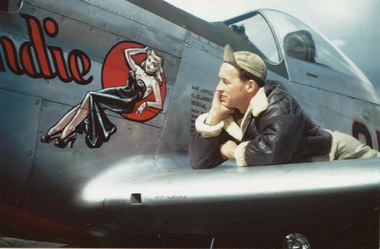
Olfactory organ Art is a type of art that gives each aeroplane a personality, thus setting it autonomously from all the other crafts that came down the aforementioned assembly line. These colorful decorations are compared to a sophisticated graffiti of the 20th century. They are called Nose Art considering of their position on the fuselage of the shipping.
The images, mostly those on historic shipping, were morale-boosting, good-luck charms, and also reminders of a pilot's personal life, hobbies, characteristics, and much more. Oft they had political significant every bit well, with a propaganda purpose, or served as a manner to mock the enemy. The practise of decorating the sides of an aircraft with pictures and words did not always have official blessing.
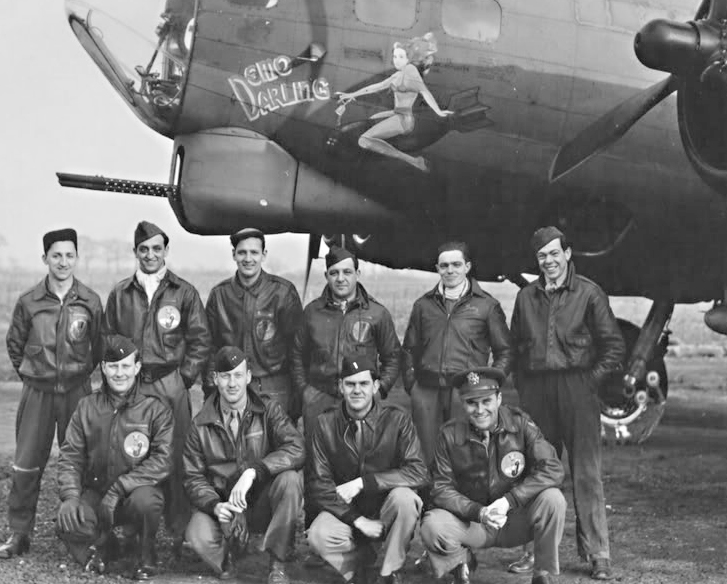
Ofttimes it didn't even have to be Nose Art or paintings in general, with which pilots decorated and distinguished their planes. Some pilots who were successful in the air didn't have much in the way of drawing skills or didn't want to describe something. Then, instead of drawing they simply put an inscription on the aeroplane and in this way named it.
For them, the aeroplane was a kind of adult female who temporarily replaced their married woman at dwelling house, and so they treated the plane as their "lady". They treated the plane with respect for sentimental reasons. They were also superstitious because they were afraid of it betraying them when they needed it in their struggle for survival. Afterward many pilots drew a four-leafage clover on their planes to bring them luck and happiness in the air.
The Nascence of Olfactory organ Art
Nose Art traces its origins to the First World War. It had a very practical purpose – visual markings were needed to divide friendly arts and crafts from foe. The offset symbols were formal and used variations of national colors and icons already in utilise. These identifying symbols, typically painted on the tails and fuselages of aircraft, were shortly joined past other markings indicating the number of missions or kills completed by the aircraft too as other personal drawings. Olfactory organ fine art mark became a form of differentiation of a particular airplane and typically the airplane pilot sitting in it became famous for his individual victorious successes in canis familiaris fights or air battles. In this way the military and civilian public knew the airplane pilot's name and what his machine looked like.
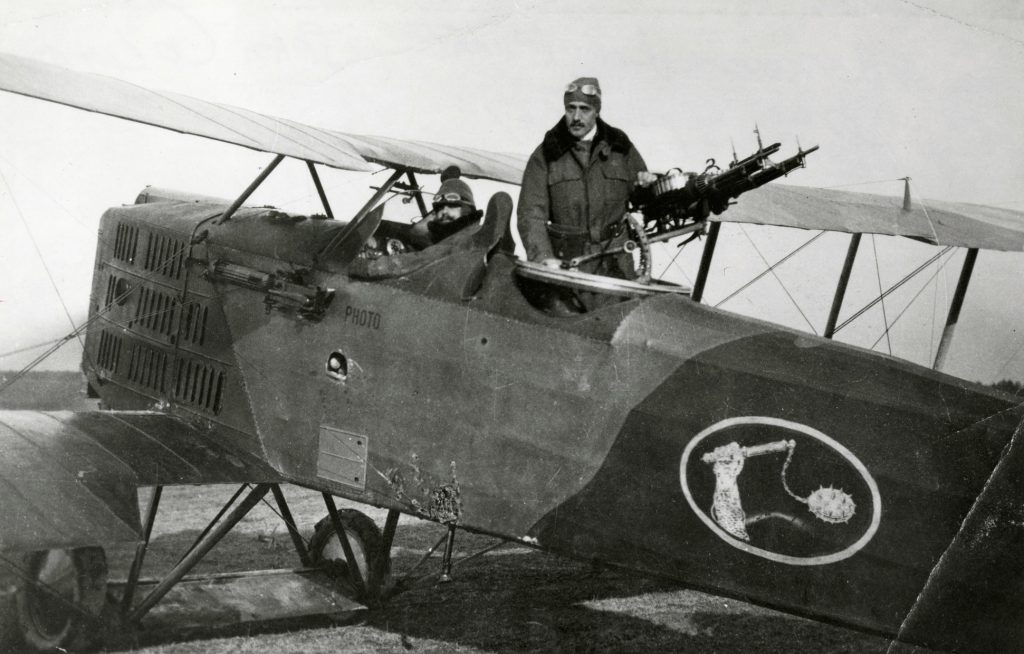
Placing personalized decorations on fighting aircraft began with German language, French, and Italian pilots. One of the virtually interesting and famous examples is the Red Airplane of Baron Manfred von Richthofen, known as the "Red Baron". The High german pilot was considered the ace-of-aces of the war and started an era or cult of personal success and individuality every bit a pilot in the then-called canis familiaris fights. With a desire to be different, to emphasize the contrast of the plane with the sky, and to spread his celebrity in the air in the consciousness of the enemy, the Baron personalized his airplane by painting it all ruddy. Hence he got his nickname, Red Businesswoman. Richthofen'south story has been filmed and if you are interested you lot can watch the trailer hither.
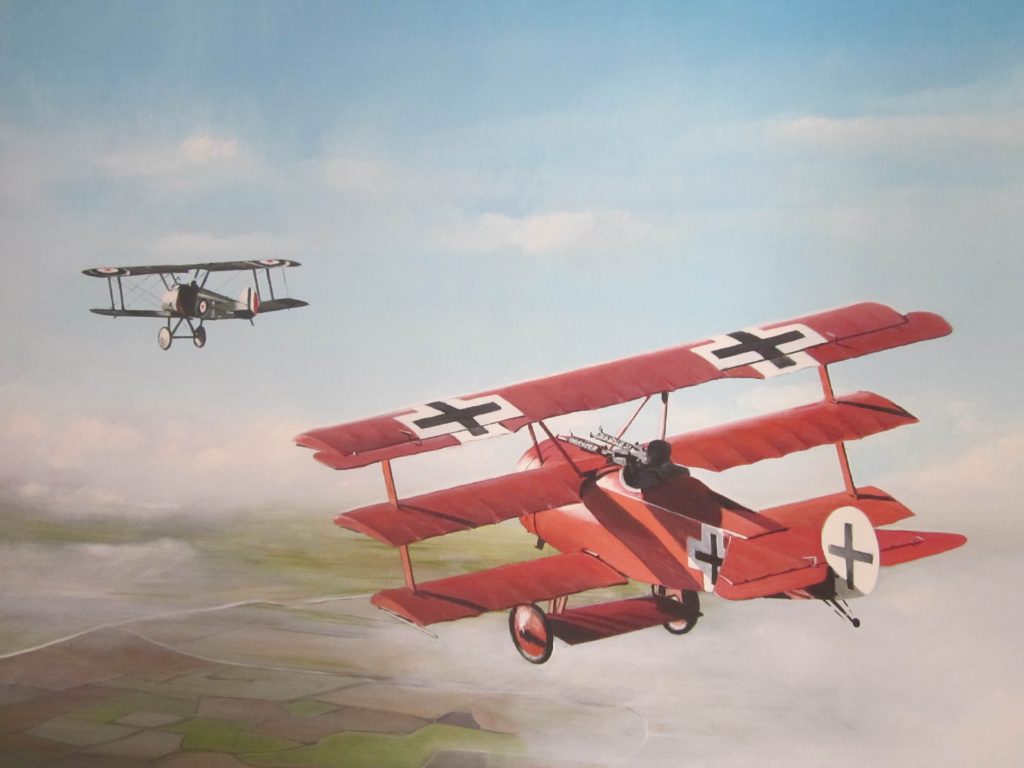
Other pilots wanted to be unlike and began painting various symbols, motifs, mascots, numbers, or family coats of arms on their planes. In this way, they wanted to specify their way of fighting, tactics, or fifty-fifty aristocratic origin. Past personalizing their aircraft they aimed to split up themselves from some kind of uniformity. Count Francesco Baracca, Italy's pinnacle fighter ace of WWI, wore an emblem of a black horse a so-chosen cavallino rampante which later inspired Enzo Ferrari to utilise information technology on his racing cars.
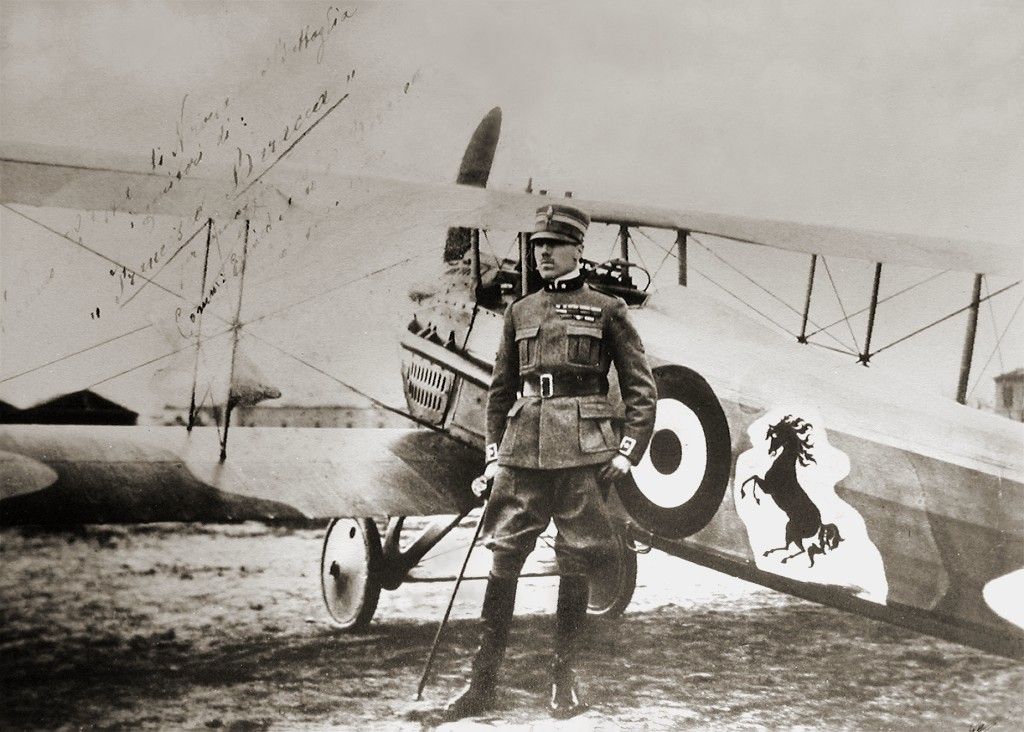
At its near basic, Olfactory organ Art painting enhanced a physical feature of the shipping. That is the reason why German pilots were the starting time to come up up with the most distinctive and specific forms of differentiation. They transformed these features into menacing images, with a shark or tiger rima oris being the about common. They took reward of the shape of the entire aircraft then that both the animal and the plane become ane menacing entity. The first noted "Shark mouth" was on the German Roland C.Ii. (Revell), aircraft usually referred to as the Walfisch (or Whale).
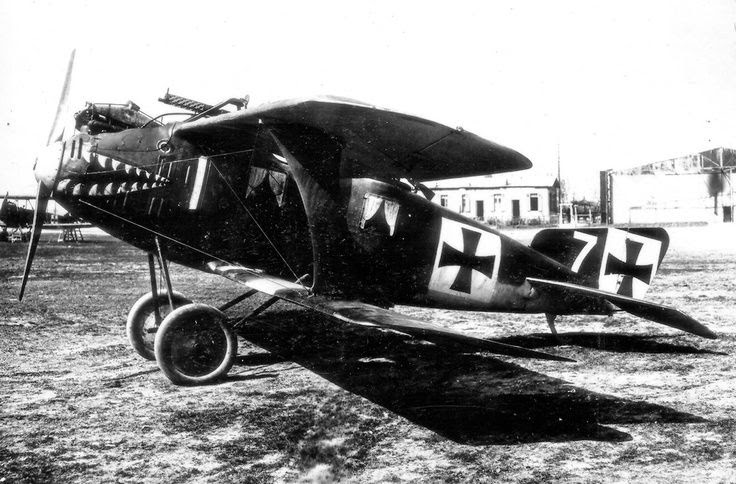
Past giving the airplane the face of an animal, it was supposed to evoke in the enemy the feeling that Germans were predators who went hunting for their prey. With this marker, equally part of a tradition, Germans continued until the germination of the Luftwaffe during WWII.
When German language aircraft Messerschmitt Bf 110s encountered the RAF 112 Squadron in the Due north African desert, the same blueprint of the shark mouth appeared in July 1941 on the Curtiss P-40 Tomahawk. This American shipping was given to the Majestic Air Forcefulness as a form of assistance in combating their common enemy. British pilots also used the shark mouth on their P-40s equally a manifestation of rival inspiration.
Flying Tigers
-
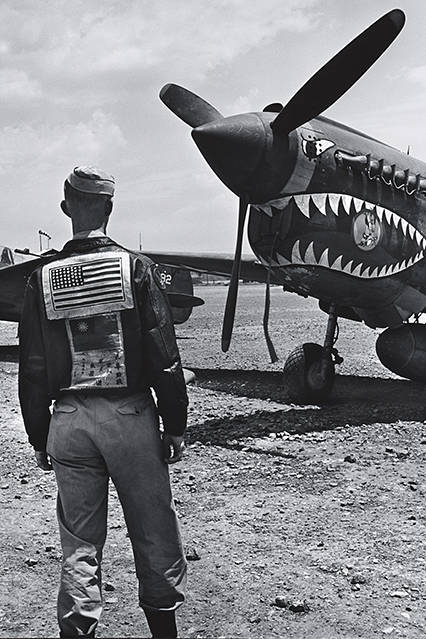
Photo of an American pilot continuing in front of the Curtiss P-40. Wall Street Journal. -
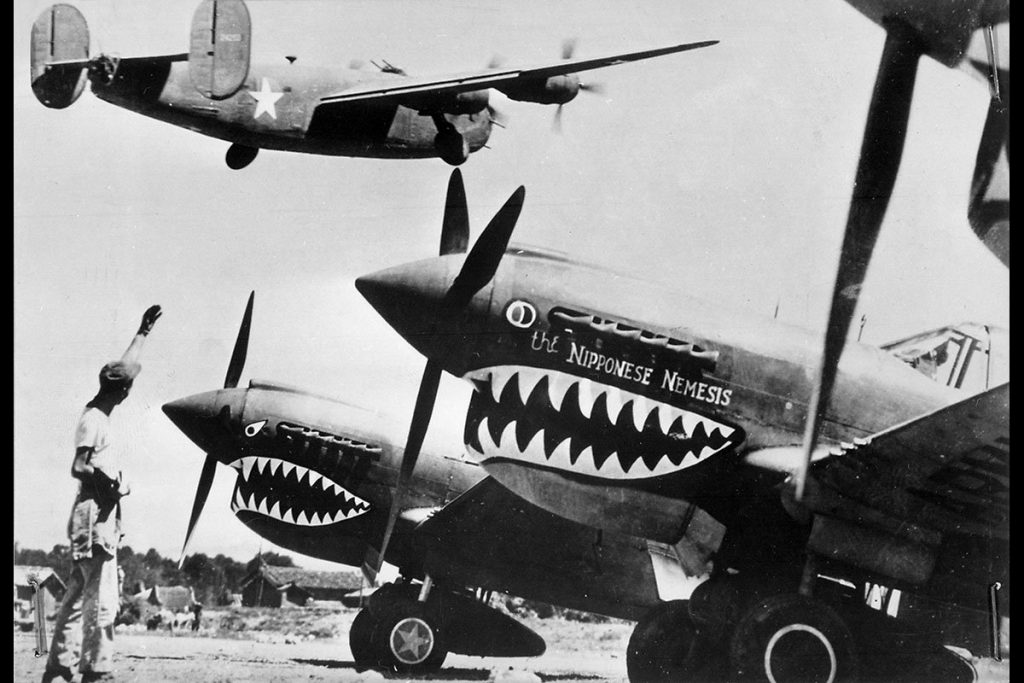
The First American Volunteer Grouping (AVG) of the Chinese Air Force nicknamed Flying Tigers, 1941-42. Pinterest.
However, the unit which became nearly famous for their apply of the shark's mouth was the American Flying Tigers. They were a group of volunteers who flew from China on American Curtiss P-40 aircraft and made raids on Nihon in 1941-42. During their missions throughout the Pacific and over Japanese territory, they recorded such a high number of successful shots and victorious battles that they made the name of their squadron famous. The entire squadron painted their planes with shark's teeth, which was the hallmark of their enemy.
The Flying Tigers have also get icons in pop-civilisation and the fashion industry having attracted attention with their Shark mouth Nose Fine art design. Brands similar Alpha Industries used the shark mouth or Flying Tiger proper name in many designs and to this day anybody associates the shark teeth logo with the Flying Tigers.
Gilt Age of Nose Art
It didn't take long, for Nose Art to go real works of art. The phenomenon of Nose Fine art finds its best expression on American military aircraft during the 2d Earth State of war which is considered its golden age.
Each piece of Nose Art is a window into the history and the lives of the airmen. It gave an identity to a airplane pilot or a crew and the detail aircraft that they depended on for their lives. WWII is when the art form really picked up a name for itself. Early in the war, before the Battle of Britain, the RAF was receiving young men from all over the earth and they started to paint their nationality. By the beginning of 1941, it took the proper name Nose Fine art for the simple reason that information technology was the only position on the aircraft where they could paint without interfering with markings, identification, or series number.
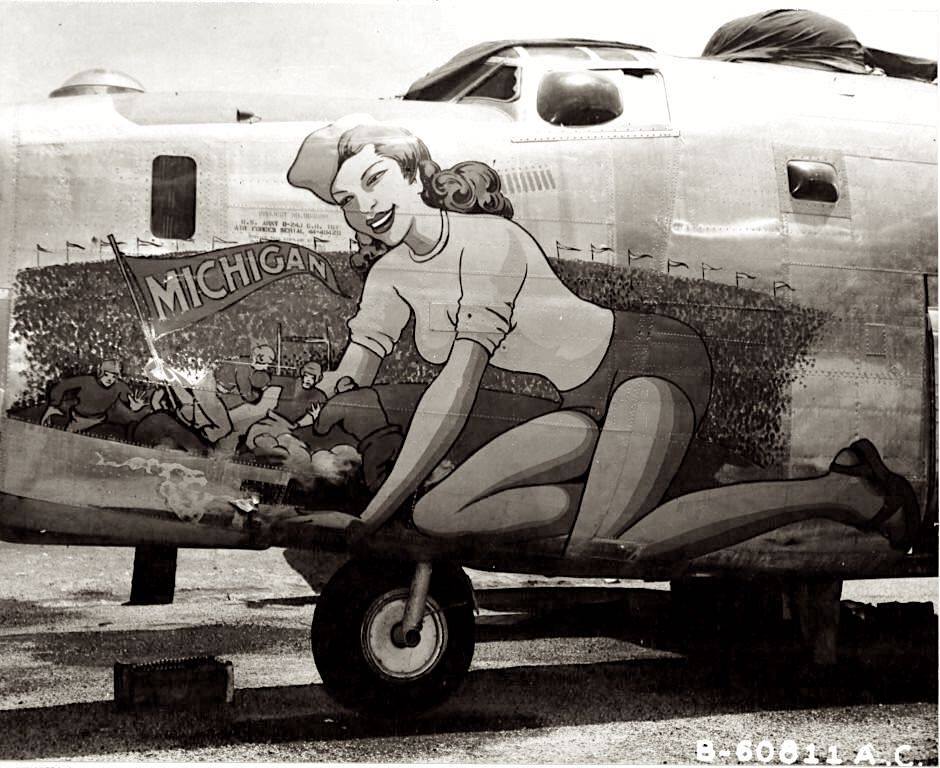
All the same, American pilots contributed the most in making Olfactory organ Art famous. Using their ain inventiveness they painted unforgettable images and motifs which are even so remembered even though many of them were not captured in photographs or no longer be. Animal or insect motifs business relationship for about fifteen percent of Olfactory organ Art images. The number ane subject in the 2nd World War became the pin-upward girl though.
Pin-Upwards Girls
-
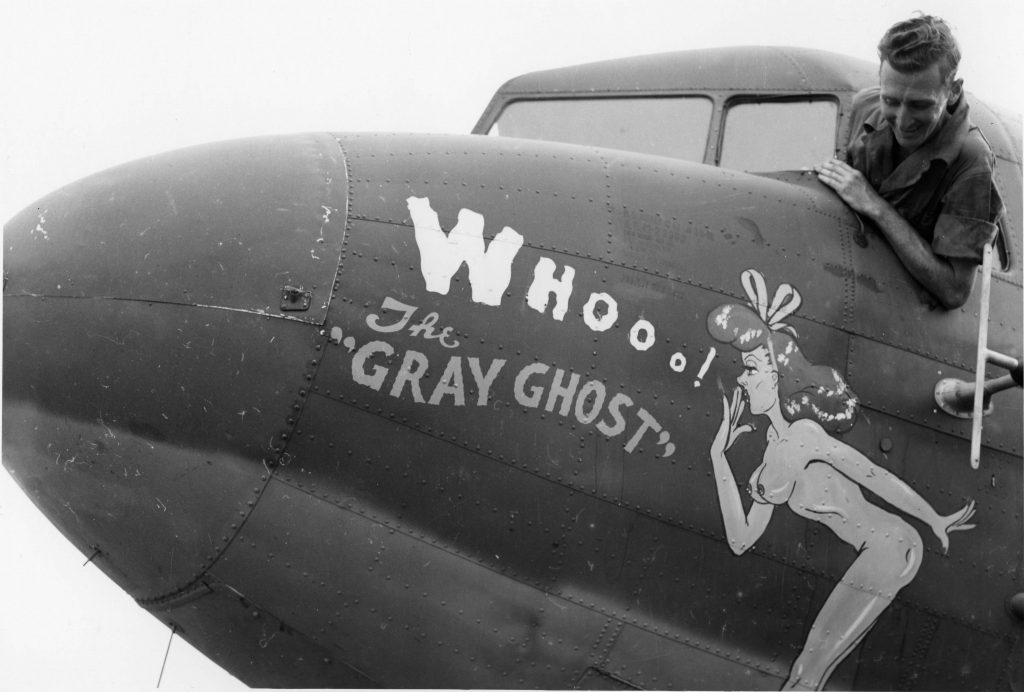
Douglas C-47 Skytrain with Pinup Nose Art and inscription "Grey Ghost". History of War. -
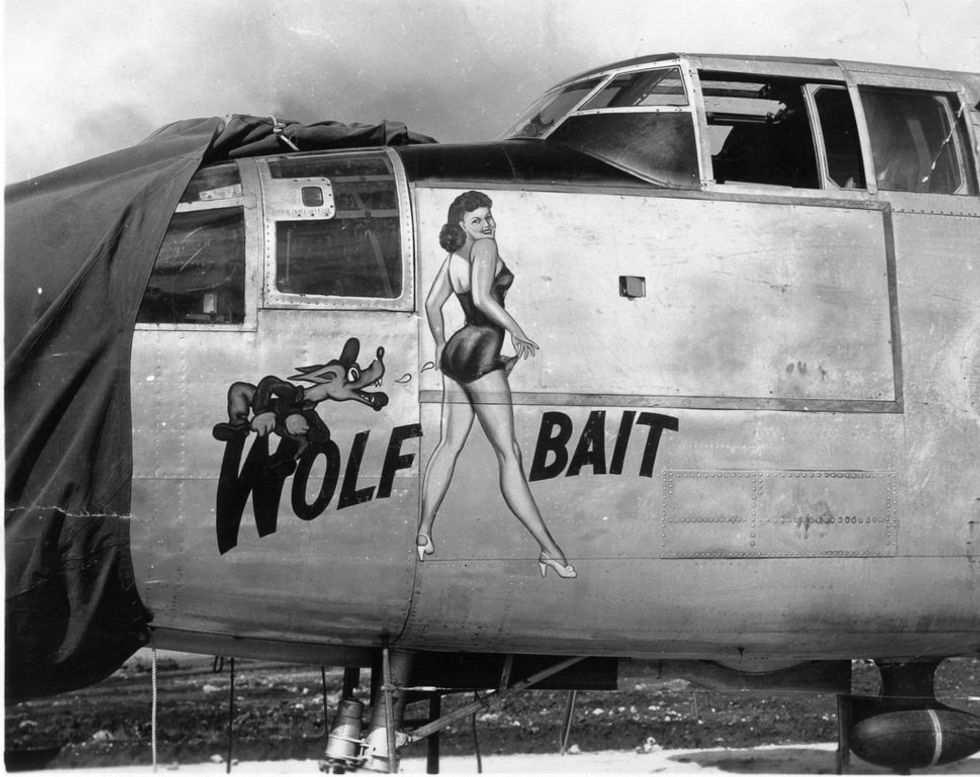
Olfactory organ Fine art "Wolf Allurement" on the B-25 Mitchell Bomber. Photographed by Set. Gert O.Ulthman, USA Signal Corps, probably on Okinawa or le Shima. Wikimedia Commons.
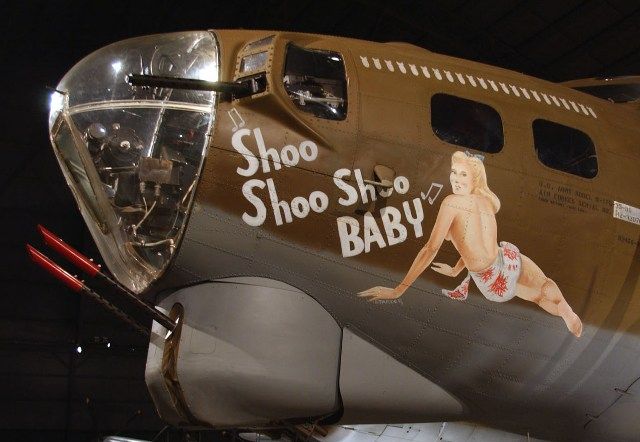
The average historic period of a bomber crew was 22 years old and they were mostly single. Being away from home, ladies were on their minds. Pin-upward girls and provocative female paintings, often half-naked, were matched with memorable names. Some of the nose art was less sophisticated and some more than. Many aircraft were likewise named after wives, mothers, daughters, and movie stars and, equally such, any olfactory organ art images were very attractive.
-
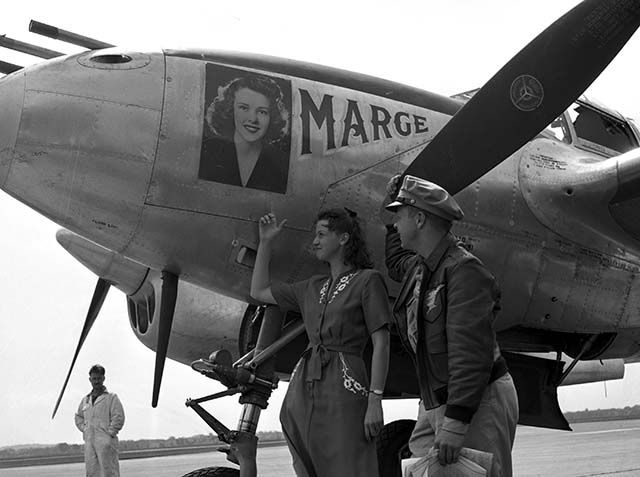
Major Richard Bong and his wife Marge under the P-38 Lightning aircraft with portrait of Marge. Wikipedia. -
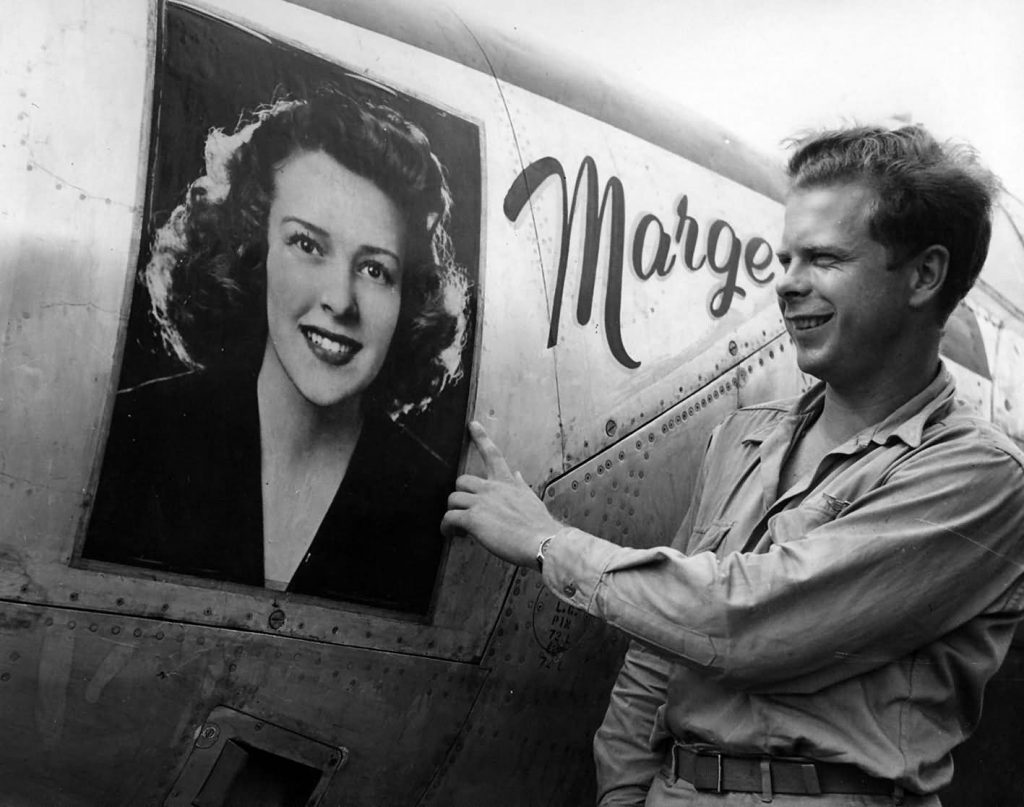
The Usa's highest scoring fighter ace Major Richard Bell points at P-38 Lightning fighter named "Marge" and adorned with her picture. Wikipedia.
One fascinating example of Olfactory organ Art with a real woman'southward portrait is the then called "Marge" Nose Art in the pictures above. Major Richard Bong, the USAAF pilot in tribute to his beautiful wife Marge painted her detailed portrait on his P-38 Lightning aircraft.
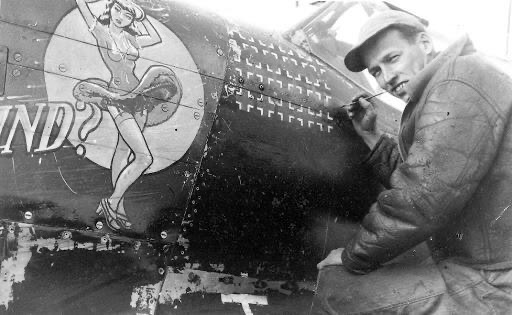
This picture shows the "Ill Wind?" a P-51 Mustang aircraft, and the Olfactory organ Art creative person Dan Allen painting one of the 15 victories credited to Lt. Nicholas "Cowboy" Megura, well-nigh the pin-up girl olfactory organ art. 75% of the men who painted these pin-ups, or Olfactory organ Art in general, were not trained artists, they merely had a natural talent. There were, of course, also a few of them who were trained artists and thus made their sketches famous.
In that location was lots of pin-up Nose Fine art painted on American bombers such as B-25 Mitchell known mostly because of the famous "Doolittle raid" – information technology was the beginning time in history that a bomber took off from an aircraft carrier heading to Nippon. However, ane of the best-known pin-up paintings, which has become part of the Olfactory organ Art history, is definitely Memphis Belle.
Memphis Belle
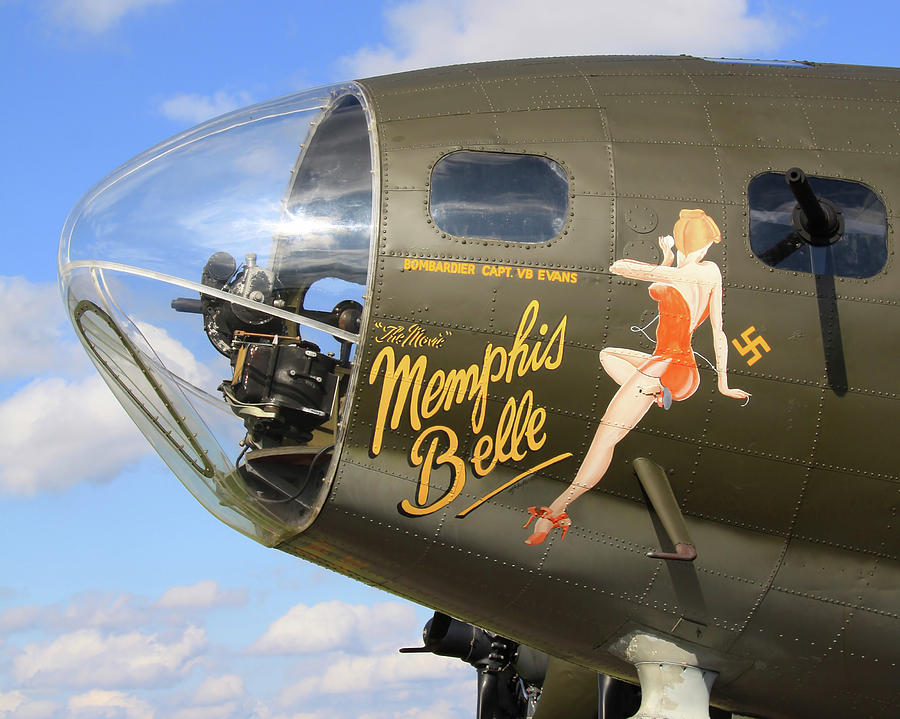
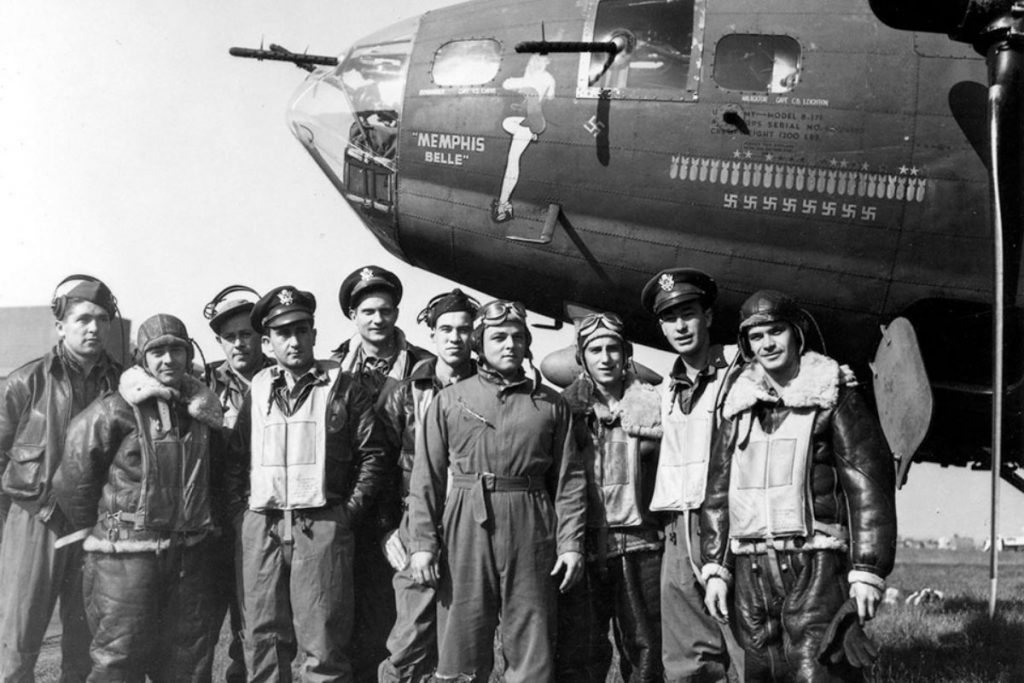
"Memphis Belle" presents a legendary story of an shipping and a combat unit that was largely promoted by the American media during World War Ii. The gainsay unit flew American B-17 bombers (created past Boeing visitor) and became famous mainly for surviving the last bombing raid confronting Lorient, a German language submarine base, and for completing all of its 25 mandatory military missions and returning to the base of operations with a very successful score. In this picture you tin see the whole coiffure continuing in front of Memphis Belle, a Boeing B-17F Flying Fortress. The unit was chosen every bit a mascot for the United states Air Force during the state of war to emphasize that the soldiers didn't have to be agape. If they were diligent enough, followed orders, and fulfilled their tasks, they would survive the war and go heroes. It was also meant to serve every bit a form of propaganda. Their last legendary mission inspired Hollywood to create a Memphis Belle moving-picture show in the 1990s.
The shipping was named after pilot Captain Robert Yard. Morgan's sweetheart, Margaret Polk, a resident of Memphis (Tennessee), to bring happiness to the coiffure and to protect them during dangerous raids and missions. George Niggling, an American pin-upward artist was then contacted and asked by Morgan to draw a pin-upwards girl to go with the proper noun. Every bit we can encounter in the pictures, Memphis Belle is turned away and therefore doesn't have a visible confront, as if to signal that she has no specific identity (even though she had). Instead she is meant to symbolize all the women, girlfriends, daughters, mothers, or movie stars of that time. They simply represented a female force to protect them and their safe home return.
In add-on to Nose Art, the aircraft was also marked with the number of enemies that the pilot of the aircraft shot down in air combat. The number of shots was either fatigued with bombs or if it was a victory over the High german Air Force, the so-called Luftwaffe, a swastika was drawn. The British equally well as the Americans used swastikas and bombs as symbols of shooting downwards enemy aircraft. The number of shots was always strictly controlled considering if a pilot painted more than shots than he actually had he could go a heavy fine or fifty-fifty be sent to a military prison.
A very interesting instance is an Avro Lancaster "Leader" Bomber with a Kangaroo wearing flying boots and lustily playing the bagpipes. Besides this Nose Art on the fuselage, there are bombs representing raids over enemy territory and ice cream cones depicting Italian targets. The interesting thing is that this concrete Lancaster bomber notwithstanding exists and it is airworthy to this 24-hour interval.
Walt Disney Characters
Cartoon figures and other well-known icons (such equally the signs of the zodiac) account for another 30 percent of images present on the WWII aircraft. The majority of the cartoon figures trace their origins to comic volume heroes and villains, as well as to characters in contemporary cinematic blithe features, notably those produced by Walt Disney and Warner Brothers.
In fact, a lot of cartoon characters from Walt Disney were used in Olfactory organ Fine art pattern. A very famous example of such Nose Art is the "Medicine Lid", which has an prototype of Goofy on its fuselage. The artist was one of the ground crew and he chose to paint Walt Disney's Goofy dropping bombs. The thought was, that each time the shipping flew, the enemy was receiving more "medicine from the hat".
Walt Disney started contributing free of accuse. He had five artists that did nothing through the state of war only create insignia. With his artwork and cartoon characters, Walt Disney had the greatest impact considering the young men that went to war had been brought up with Walt Disney'southward films.
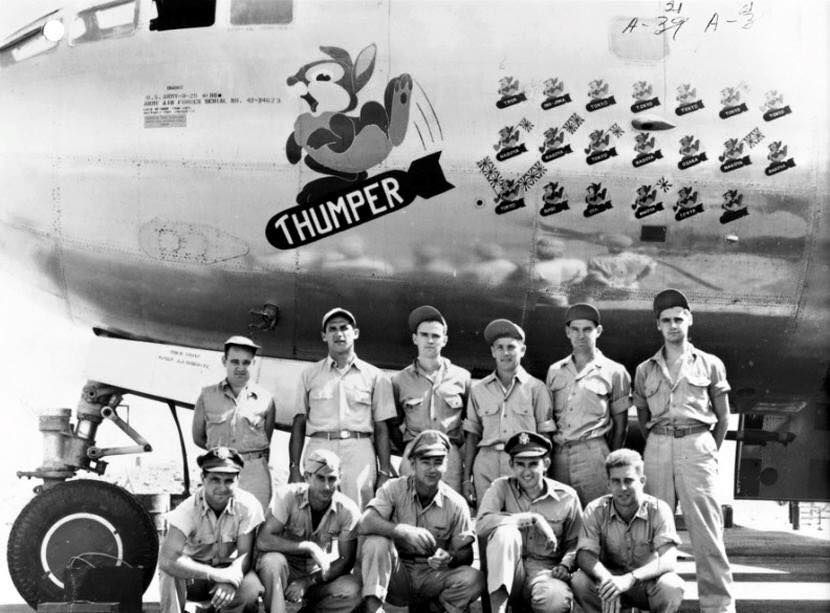
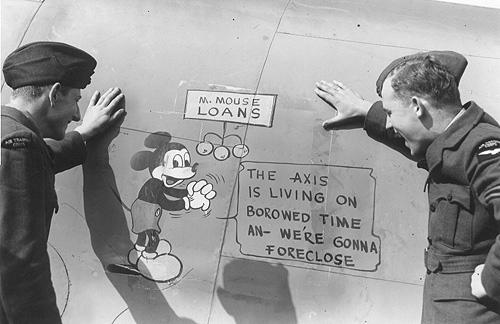
One of the most famous Disney movies at that time was Dumbo. It had a huge affect on the pilots because with his big ears Dumbo was able to wing and thus became a symbol of the aircraft and airplane pilot's capabilities.
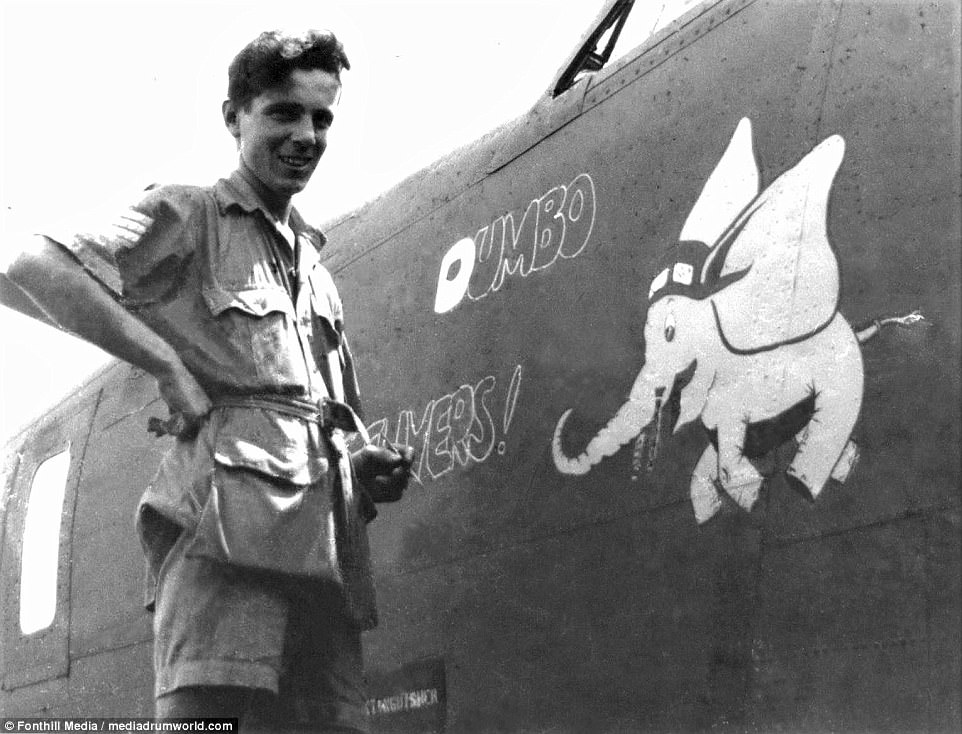
With quite a variety of subjects for Olfactory organ Art, this piece is very unique: The 'Ellcat. It has a directly connection to Hamilton and the Hamilton Tiger-Cats football team. It was painted past Matthew Fergusson, Canada's best Nose Art painter of that time.
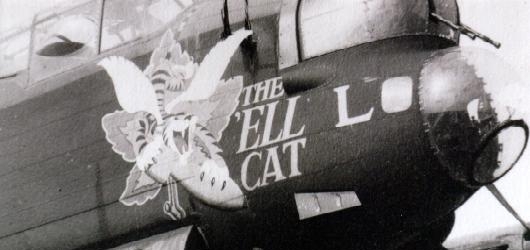
Mockery of the Enemy
The state of war escalated and the Americans tried to ridicule the Germans and the Japanese more and more, as evidenced past new forms of Nose Art. These parodied and comically ridiculed Hitler, Germans, and Japanese, in diverse comics or Nose Fine art versions. As information technology was also a class of strengthening 1'due south self-confidence.
-
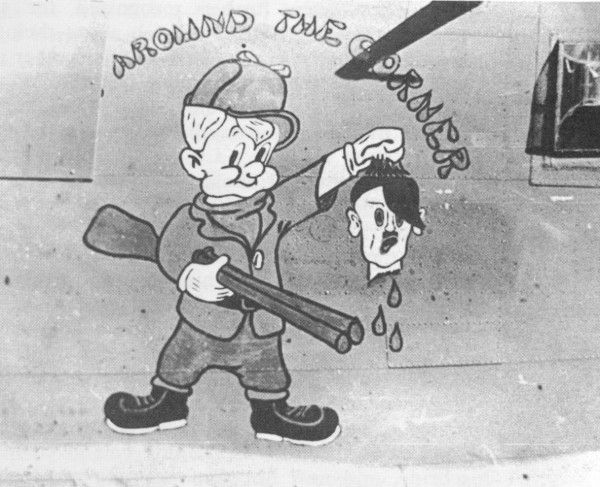
"Meat Around The Corner" B-24H 41-28738 with the 458th Bomb Group out of Horsham St Faiths, Norwhich, UK. Pinterest. -
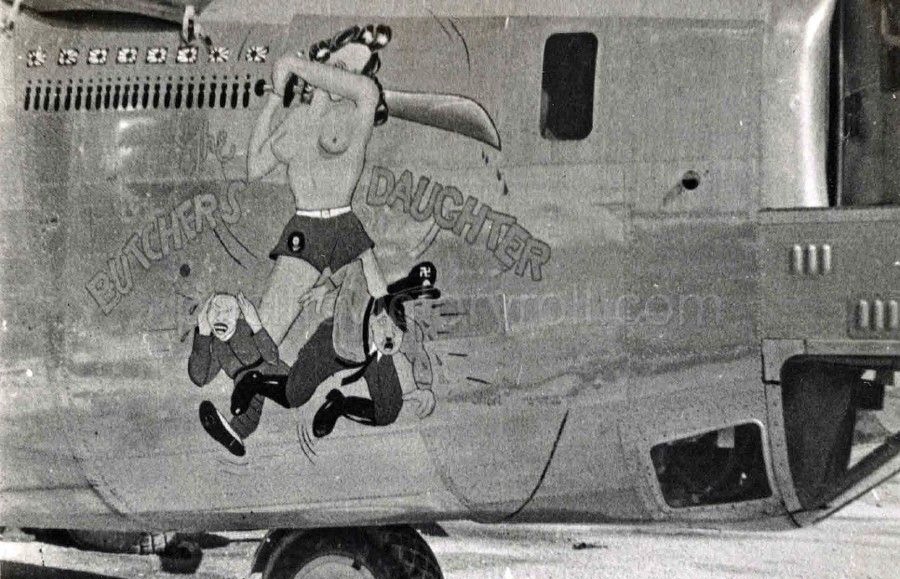
B-24 "The Butcher'due south Daughter" Pinup Olfactory organ Fine art. Pinterest.
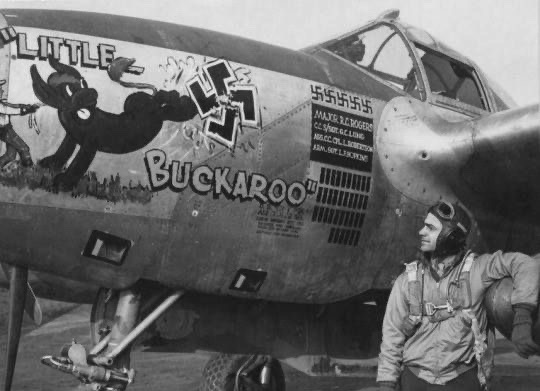
The last picture shows pilot Major R.G. Rogers looking at his Nose Fine art called "Little Buckaroo". Here an American cowboy tames a bull (his plane) and shows how he kicks the ass of the Germans represented by the swastika sign.
The Nose Art of Enola Gay and Bockstar
At the very end of World State of war II the Us made two last bomb attacks on Japan in order to force them to give up. Two of the about famous of B-29 Superfortress bombers were sent: the kickoff was normally known as Enola Gay, which dropped the "Little Boy" atomic bomb on Hiroshima, and the second was called Bockscar.
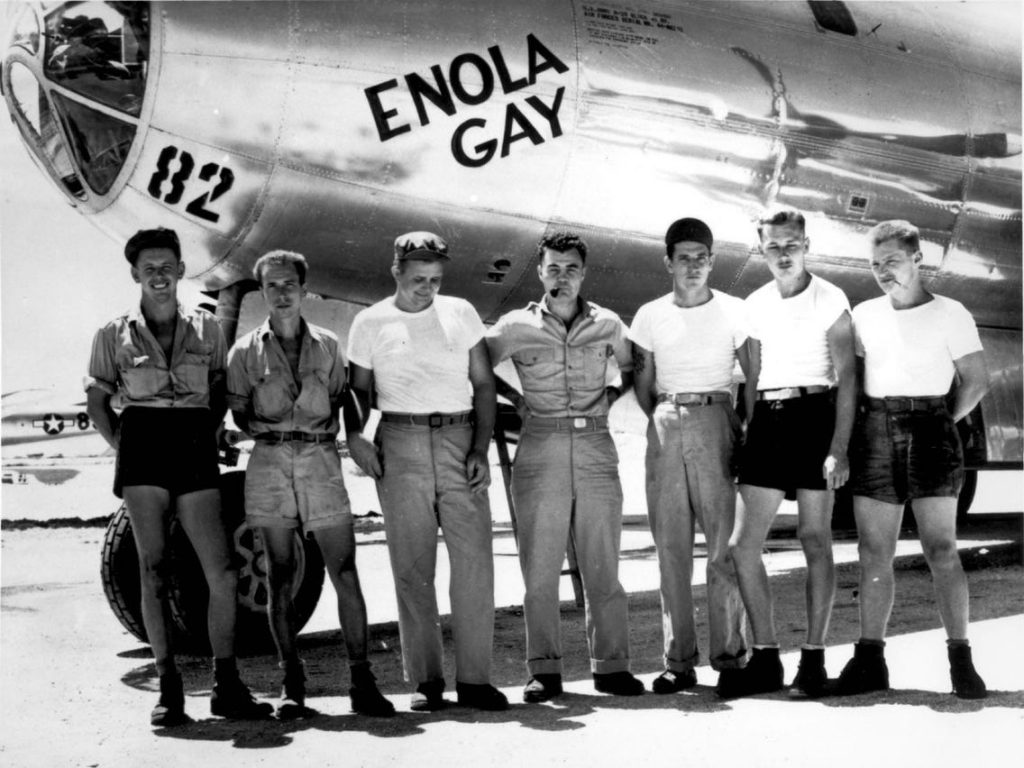
The American Bockscar bomber, nicknamed for its assigned pilot Fred Bock, was one of the 2 near famous Boeing B-29 Superfortress bombers. On August 9, 1945, they victoriously ended the war with Japan, attacking and dropping an atomic flop called "Fatty Man" on the Japanese urban center of Nagasaki. Information technology was the highest version of the bomber which the U.s.a. created during Globe State of war Ii. It was as well the shipping that ended World State of war II overall. On side of the aircraft was painted this piece of famous Nose Fine art:
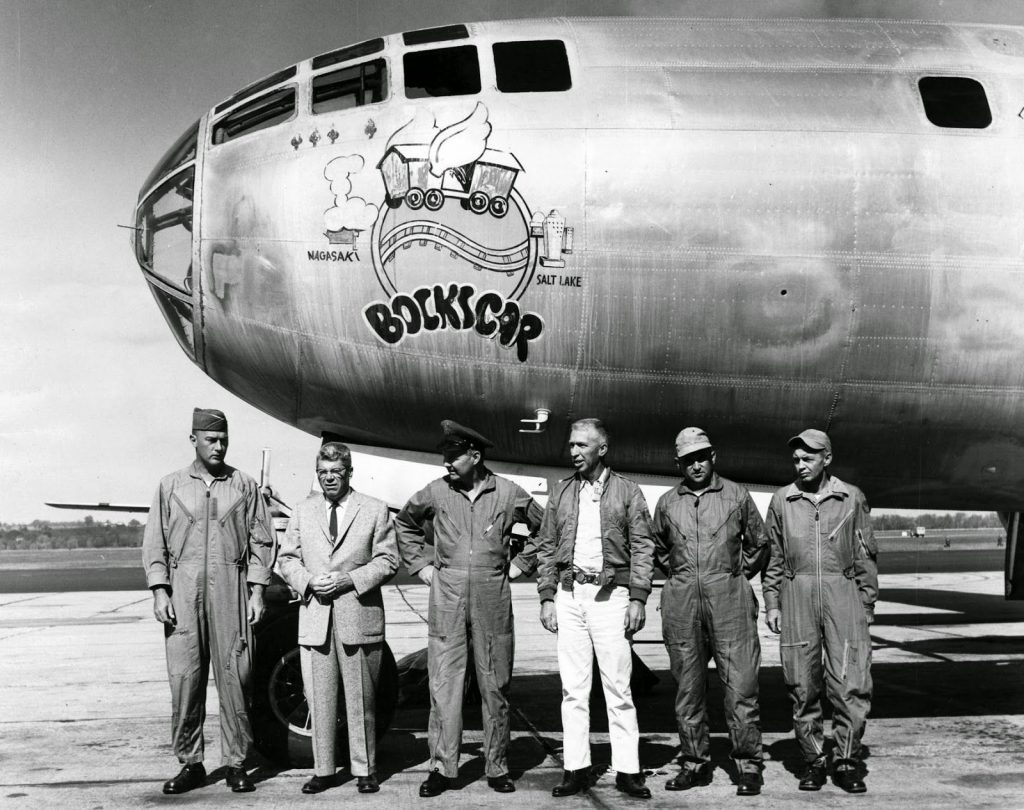
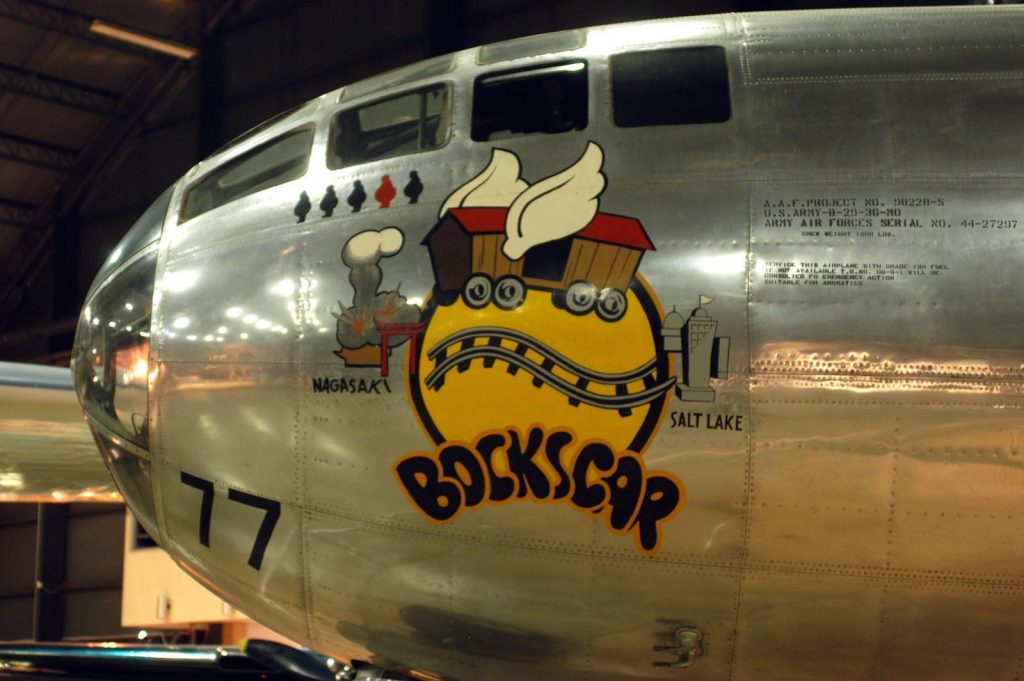
This wagon, which symbolized a wagon in which the Germans transported Jews to death camps, is winged. It was going to evangelize an atomic bomb from Salt Lake to Nagasaki (the bomb is visible higher up the Nagasaki inscription in its typical "mushroom" form but also higher as the ruddy Fat Man). The inscription 'Bockscar' below the painting is very similar in style to graffiti and this is 1 of the reasons why Olfactory organ Art is still considered the forerunner of graffiti.
Contemporary Nose Art
The word "ephemeral" is an accurate clarification of wartime Olfactory organ Art. This is a word that describes something that lasts or is used for only a short period of fourth dimension. It was a fact of war that an aircraft would be lost either past accident or in gainsay. Therefore the preservation of any Olfactory organ Art was the least important concern of commanders who needed every aircraft and aircrew. The cease of the Second Earth War sent thousands of aircraft to the chip yard. A few scattered attempts were made to salvage the art before cutting up the residuum of the air-frame and the end event is that there are few actual examples of this art in existence today.
After the Second World War, the tradition of Nose Art in the aviation manufacture has been preserved to this day in various forms and uses. We tin admire restored paintings that were saved from the Erstwhile WWII aircraft or new forms of Olfactory organ Art in the civil sector of aviation, on fighter jets, or on remodeled celebrated aircraft that can be seen in flight demonstrations during organized aviation days.
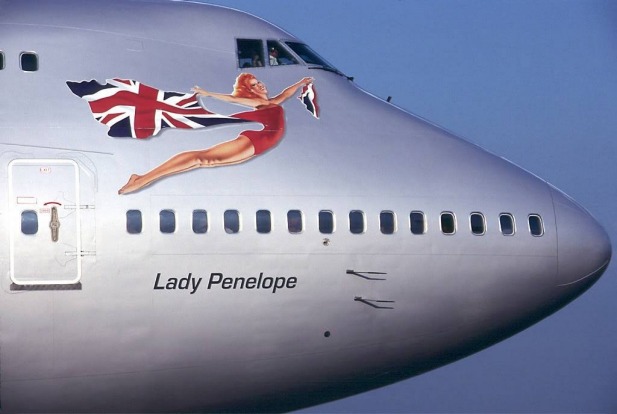
Gimmicky Nose Art is frequently thematic and can celebrate a circular anniversary, or symbolize armed services history. Meanwhile, in the noncombatant sector it tin exist used equally a form of advertizing. Information technology is possible to see Olfactory organ Art on ceremonious aircraft with a moving picture theme or with the theme of product advertising campaigns or marketing news. Examples of such are the Japanese Airlines Ana with Star Wars ornament or New Zealand Airlines with characters from the movie Hobbit sprayed forth the unabridged length of the aircraft.
-
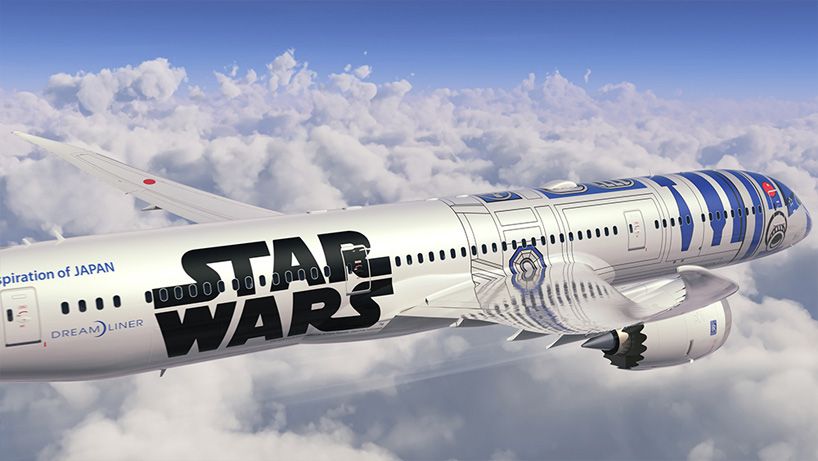
Japan Ana Airline "Star Wars" jet. Star Wars. -
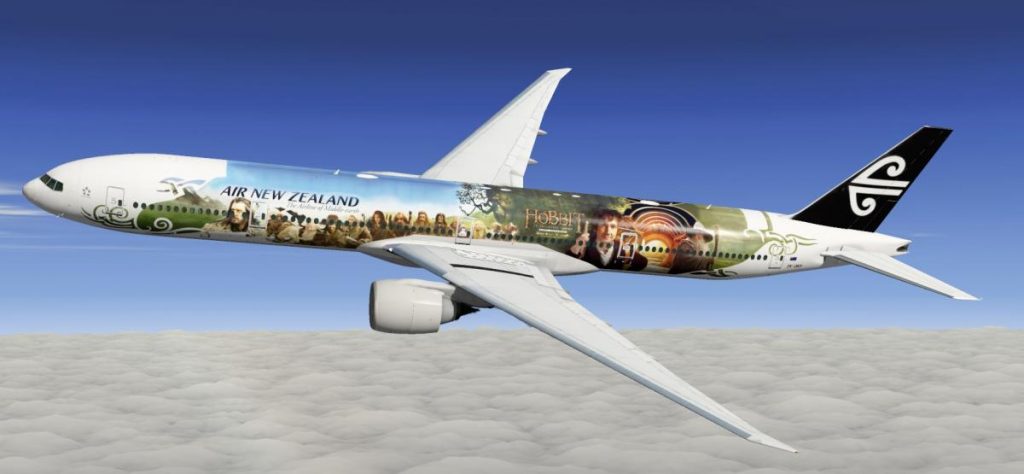
Air New Zealand "Hobbit" jet. Daily Mail service.
At that place are also Olfactory organ Art competitions all around the world. In these diverse artists endeavor to create their ain, personalized Olfactory organ Art past spraying it on the fuselage. The ane which is the about liked past the jury wins.
In terms of historical preservation of this tradition, the greatest pioneers and maintainers of Nose Fine art are the celebrated-modern Austrian air unit of measurement Flying Bulls, owned by Ruddy Bull. Red Bull has a private drove of historic WWII aircraft. These warbirds are presented at various air shows and their "nest" is in the beautiful Austrian Hangar-vii. Here they are displayed and can be seen by visitors and passionate enthusiasts. Well-trained Red Bull pilots endeavour to wing air demonstrations with their planes so that they look authentic and at the aforementioned fourth dimension the planes themselves look authentic.
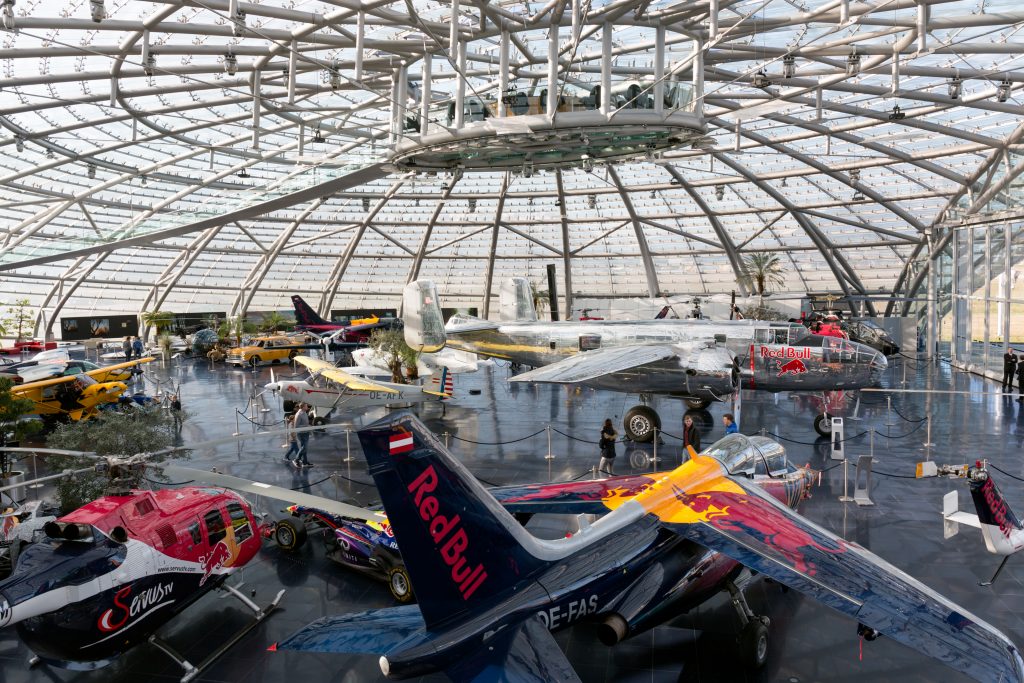
The exact appearance of Olfactory organ Art has changed to a modern course of advertising for the Scarlet Bull brand itself. Information technology has replaced political propaganda for the opportunity to nowadays a product, advertise and marketplace information technology through either mod or historic shipping. They exchanged the propaganda for advertising. Today, the form of modern Olfactory organ Art is on Flying Bulls shipping. However, as it is privately owned by one of the richest companies in the world, Red Balderdash, information technology is primarily Red Bull'south marketing which still strives to preserve Nose Art's tradition, although in a modern grade. Recently Red Bull'due south historic WWII airplanes, P-38 Lightning and B-25 Mitchell bomber, were "tattoed" with their own Nose Fine art combining the brand'due south primary logo with the typical pinup daughter.
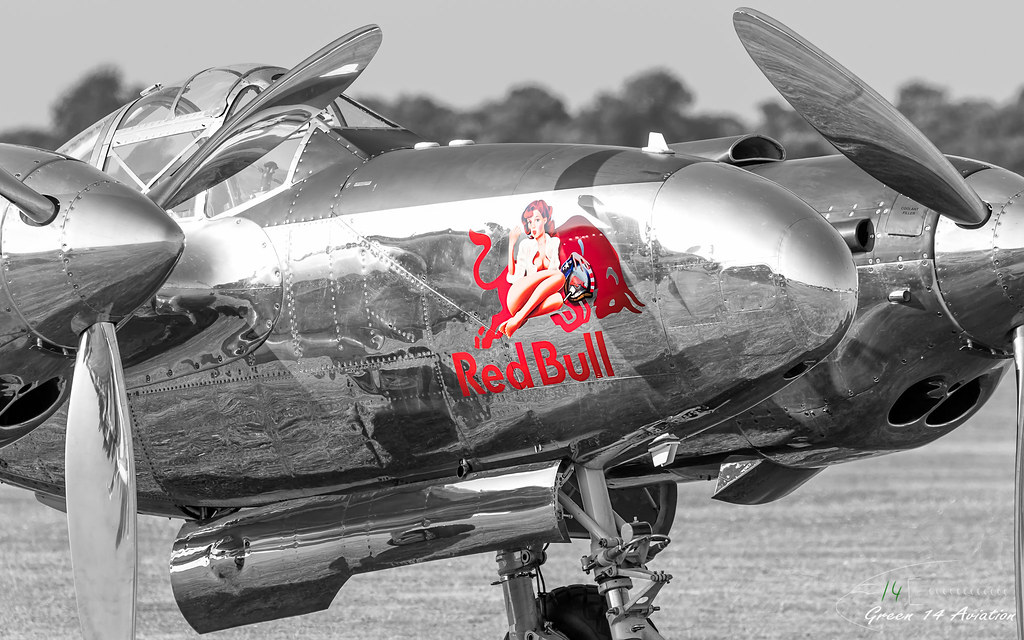
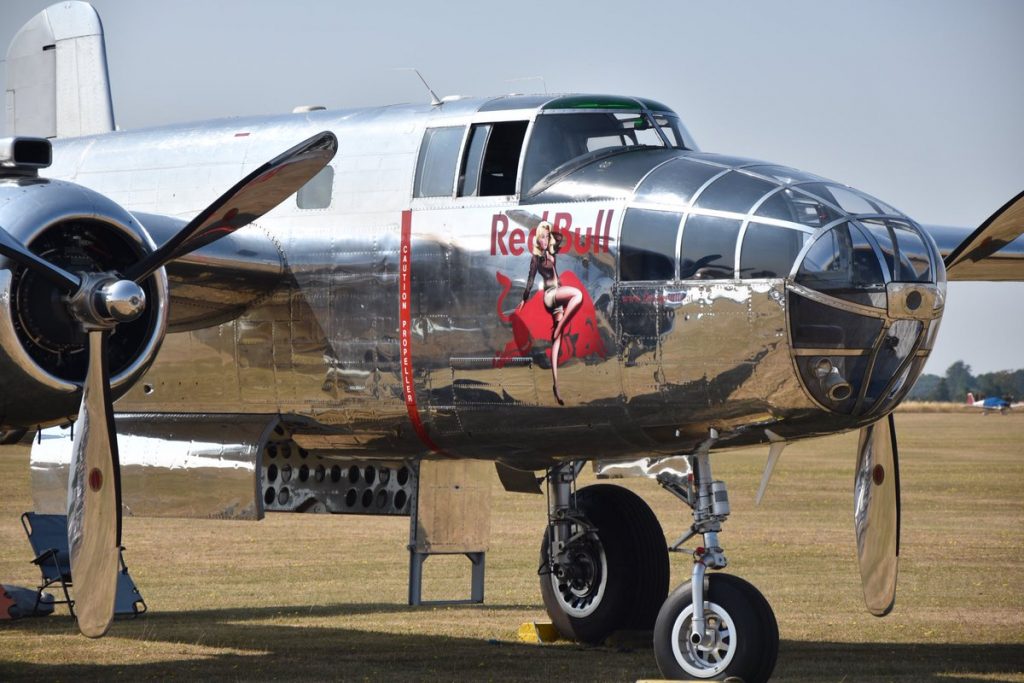
Is Nose Art Really an Art?
While it may non be "existent fine art" information technology is certainly more than graffiti. Information technology is a kind of folk art that provides a unique insight into the mindset of the aircrew and ground personnel who were thrust into an environment where the only certainty was the uncertainty of their survival.
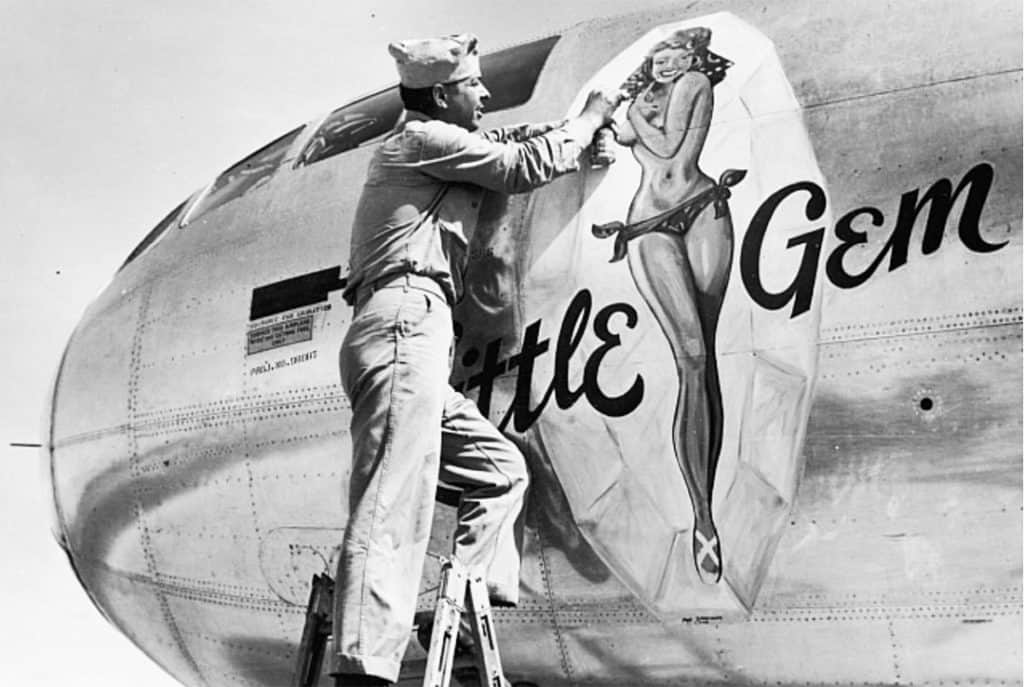
We ofttimes notice out what Nose Art looked like only because of the story of who painted it. Successful Olfactory organ Art goes hand in hand with successful pilots who have made that particular Nose Art famous. Only thanks to the skill of the pilots and their efforts to survive and fight for their homeland, were they able to preserve the works for future generations. Nose Art that was originally intended only to help them bask themselves and overcome the difficulties of state of war, nowadays for many represents a grade of modern art that they admire.
Source: https://www.dailyartmagazine.com/nose-art-by-pilots/
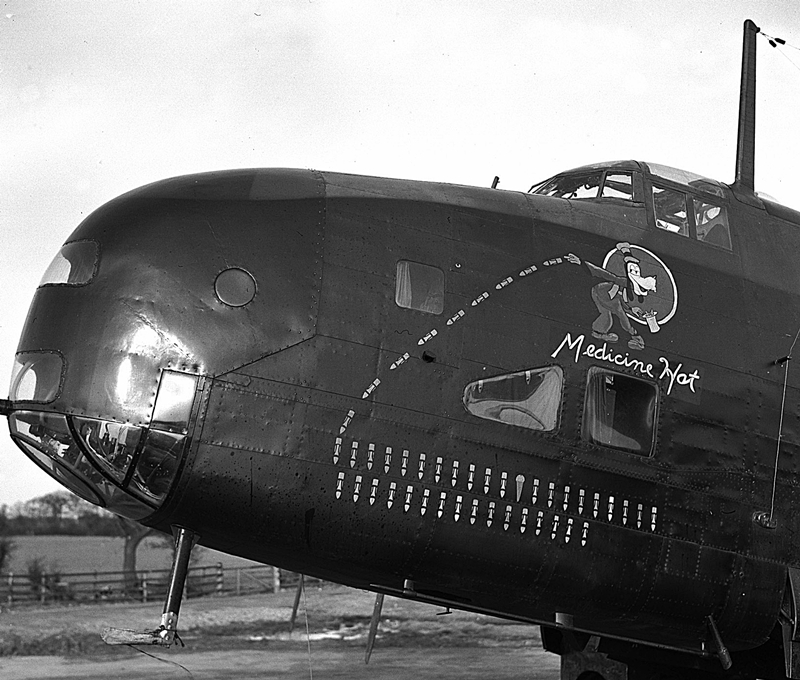
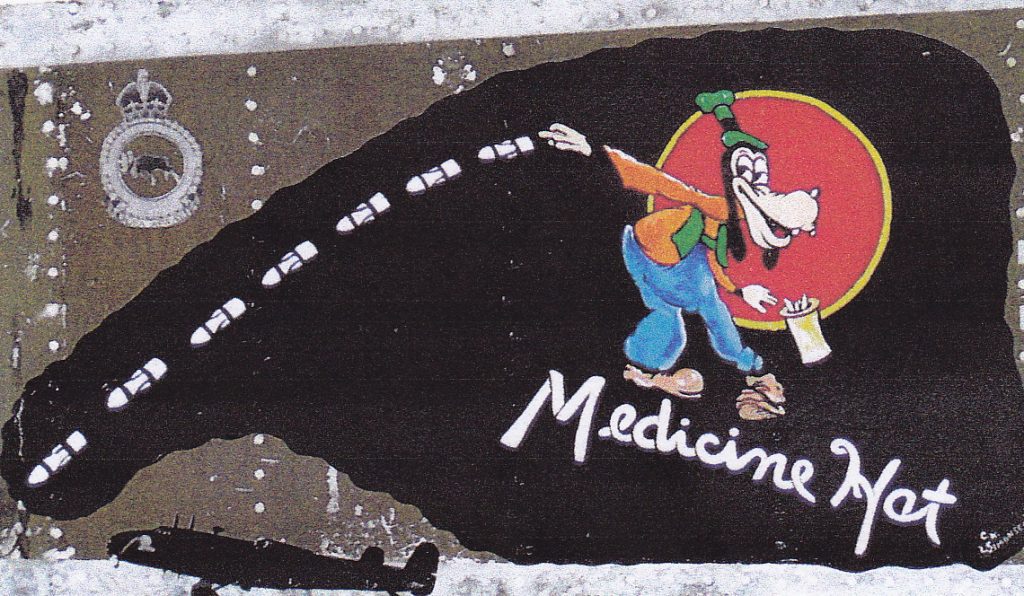
0 Response to "World War One Planes Drawings"
Post a Comment